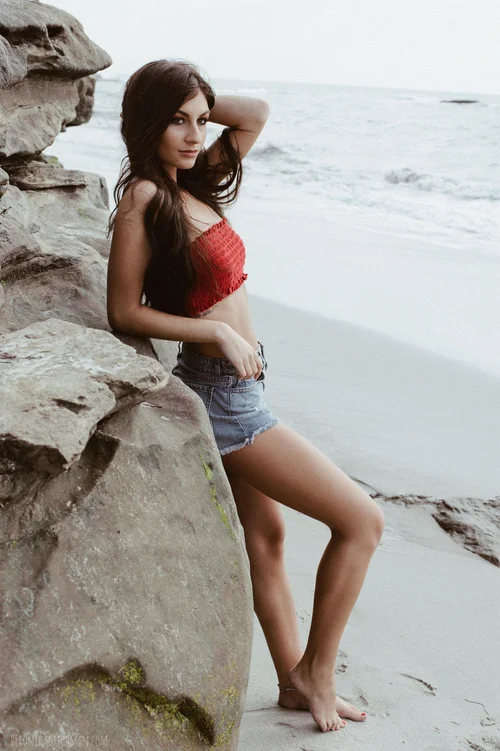The Beginner's Guide to Product Photography
If a picture deserves a thousand words, a stunning product photo deserves a thousand website brows through. Although I don't have information to back up that statement (yet), product photography can be incredibly beneficial to your ecommerce web site method.
To reach your target audience participants that like buying online, you also need to give your audience clear, appealing photos of your items.
But product photography isn't as straightforward as aiming as well as firing. Even the most standard products need the appropriate devices, lighting, and also space to generate beautiful pictures that sell shoppers right from the purchase web page.
6 Product Photography Tips (and Instances) for Taking Photo That Market
Right here are the suggestions, instances, as well as materials you'll require to properly picture and also market your items in such a way that makes your site visitors and prospects want to transform.
1. Do not be afraid to use your smartphone's cam.
This is the component where I'm expected to convince you to buy a premium, 50-megapixel (MP) video camera with a 100-millimeter screw-on lens. Yet I'm not going to do that.

If you currently own a camera that fits this summary, make use of it. However, for many sorts of items, it's entirely appropriate to fire product pictures on a smartphone.
Newer smartphones flaunt powerful camera lenses as well as setups that allow you to enhance your shots for the various types of light as well as atmospheres you might shoot in.
If you need more convincing, just take a look at Apple's Shot On An iPhone project and also the pictures that have actually resulted from it throughout the years such as this:
2. Fire from a tripod for photo consistency.
Before describing tripods, I'm bound to begin with a principal rule: Don't prop your phone versus something strong to aim your lens toward the topic.
It's just as well easy for this makeshift configuration to slide around throughout the shoot and also create inconsistencies in your images' appearance. If you relax your cam on, say, a stack of books, simply be sure this plan does not transform throughout the shoot.
There's no harm in holding your camera yourself when shooting simply a few product pictures for your ecommerce web site. However as your company expands, and you take much more images of more products, it can be hard to systematize the product's orientation in each photo when firing portable.
To make certain uniformity throughout your products, you'll need a tripod. And the good news is, buying one isn't constantly the big, industrial-sized investment it utilized to be.
Below are two kinds of tripods to take into consideration.
Traditional vs. Flexible
This is a practice tripod-- there are traditional tripods available for both electronic cameras as well as smartphones.
A versatile tripod can be manipulated in a number of methods. You can bend its legs and also place it on different surface areas to obtain the angle you need.
Mobile Grasp
There's frequently a screw on the top of your tripod which affixes to your video camera to hold it in position. The bottom of most professional-grade cams has a screw opening just for this purpose, however smart devices can use the complying with adapter:
The adapter holds the sides of your smartphone and can screw into either type of tripod, allowing you to run the video camera regulates with the phone screen dealing with outside and also toward you.
Once you establish which place you'll need, set it up before your product, as well as think about placing three pieces of tape on the ground to mark where you would love to maintain each leg of your tripod over the course of the shoot.
3. Select all-natural light or artificial light.
Never take too lightly exactly how certain sorts of light can boost (or hinder) your product photography. Keep in mind, buyers obtain the best look at an item in person, where they can see whatever they require to prior to purchasing. The appropriate lights plan helps you disclose those crucial decision-making product features when all internet site site visitors need to go on is a photo.
A solitary lights arrangement could not work for every product-- a lights plan that works for some products could deteriorate the appearance of others.

All-natural Light
All-natural light describes sunlight-- easy as that. It's additionally known as "soft light" due to the fact that the sunlight casts a larger, softer variety of light than, say, a light radiating directly on the product. Ecommerce product shots prosper in all-natural light if:
The product is shot outside or suggested to be made use of outside.
The product is utilized by, worn on, or shot with a individual (people have a tendency to look better in natural light).You're trying to highlight the product's surroundings, instead of specific attributes of the product.
Right here's an example of a shot using natural light:
Synthetic Light
Man-made light consists of candle lights, fire, and also a lot more frequently, light bulbs. It's likewise described as "hard light" because it produces a smaller yet extra focused light surface area. This kind https://trevorzedi810.exposure.co/thenbsp-newbiesnbsp-overview-to-product-photography?source=share-trevorzedi810 of light accommodates items with physical details that require to be highlighted to excite an online buyer.
As a general guideline, stick to just one type of light per photo-- natural or artificial. Including natural light to an unnaturally lit photo can soften a product that's indicated to look sharp, and also including fabricated light to a normally lit photo can develop a product that's suggested to look soft. You don't want to enter your own way.
4. Fill or bounce your light to soften shadows.
Whether you utilize natural light or artificial light, you'll need to decrease the darkness that any kind of possible https://controlc.com/0c95c9f3 difficult light casts on the opposite end of a product.
There are three methods to do this:
Load Light
Consist of one more, less-intense light to supplement your primary light. This added light is called your fill light and is made use of as a counterbalance to soften the all-natural shadow your primary light creates behind an object.
To do this, place your fill light opposite your main light so your product sits between both lights.
Flashbulb Bounce Card
A bounce card, or reflector card, is a little card that " shows" or "bounces" the major light back onto the surface beneath your product to lower darkness.
Some bounce cards affix to the flashbulb of a professional electronic camera lens to diffuse the light from the cam's flash. This card sprays a softer light onto the subject from over your set-- rather than right at it-- so you don't have lengthy darkness trail behind the object you're shooting.
Standalone Bounce Card
If you're firing from a mobile phone, a flashbulb bounce card isn't an choice, given that you don't have a physical flash you can attach it to. Rather, make your very own standalone bounce card positioned opposite your main light source.

For novices to product photography, this bounce card can successfully replace your fill light, which counters the tough light from the cam flash or lamp that's facing towards the front of your product.
5. Use a sweep or picture mode to emphasize the product.
There isn't one ideal means to place your product, lights, and bounce cards-- they can alter substantially depending on your background. Yet do not choose a history based upon what's simplest to create. Histories need to appear like just how you want your buyers to perceive your product when watching it online.
Think about initially whether you 'd such as a white background or a extra vibrant, real-world background. There's an easy means to attain every one.
White History: Move
For white backgrounds, it's not as basic as establishing a table against white drywall. Even mobile phone video cameras can pick up little acnes on a white wall surface that you wouldn't see with the nude eye. To catch a excellent white background without any edges or imperfections, utilize a move.
A move is a big bendable sheet of paper, whose lower work as the surface area underneath your product and afterwards curves up right into a white wall behind the product.
On video camera, the move's contour is invisible, stressing essential product information as well as enabling the thing to own all of a web site site visitor's interest.
Real-World History: Picture Mode
Dynamic, real-world histories are really attractive when capturing items that have a specific usage or are being modeled by a individual-- as you saw aware of the briefcase earlier in this overview.
But, it's easy for a real-world background to swipe the emphasis of the photo, making it unclear which product in the photo you're really offering.
Give your product deepness as well as emphasis with picture mode, a photo setup on a lot of specialist cameras, and additionally available on lots of new smart devices. This setup blurs the history so the context of the product is clear yet not competing versus the product itself.
Below is a incredibly amazing photo of a HubSpot pen taken in portrait mode on a Google Pixel 2 (I took this picture myself). You can inform the pen sits on a workdesk with a computer behind it, however the pen is still the prime focus for viewers:
6. Fire a range of photos.
My last ecommerce photography tip to you is to not quit at one photo per product. Just as your consumers look, hold, utilize, and also also try out goods in a store, your website needs to shoot a variety of images to imitate this extremely experience.
If you're firing clothing, as an example, catch the garment of clothes alone-- that is, spread out on a white surface area-- along with on a mannequin whose color contrasts the color of the product.
Then, for added photos, have the clothes modeled on a individual, allowing you to take pictures of the product from the individual's different presents and angles.
Product Photography Set-Up
Next, let's summarize what we simply got-- here's a list of fast product photography set-up ideas that you can describe and also share on your group:
• Select a electronic camera-- whether or not that indicates using your smart device.
• Obtain a tripod that helps your electronic camera of selection.
• Pick all-natural or man-made lights-- think of which alternative is best for your product as well as setting.
• Determine whether you'll fill up or bounce light.• Select move or picture setting.
• Take several various images to supply your customers variety.
Start With Your Product Photography
Do not feel obligated to buy every suggestion and tool simultaneously. Apply these product photography tips gradually to see what makes your shop look one of the most presentable, and transform your strategy as your photography chops get better.